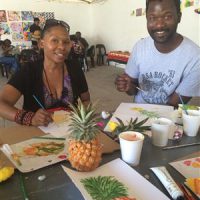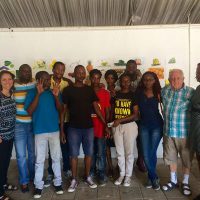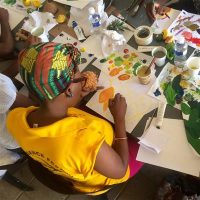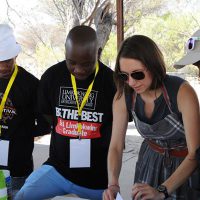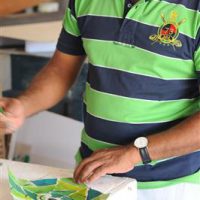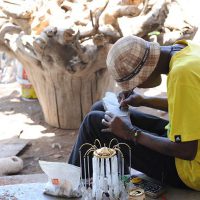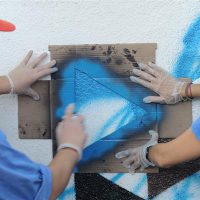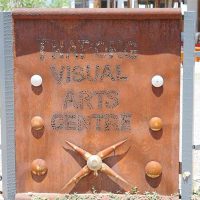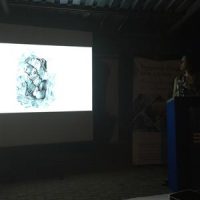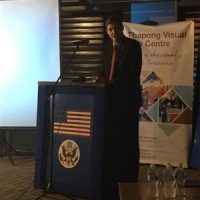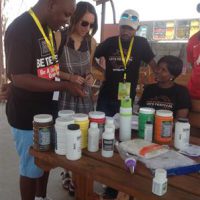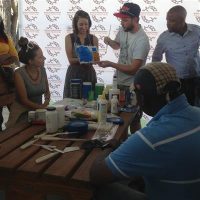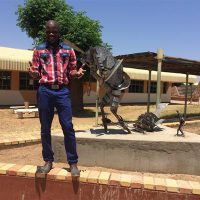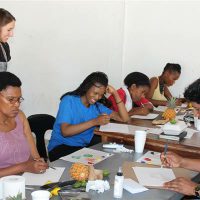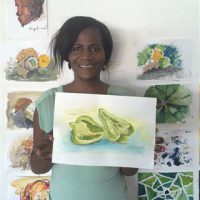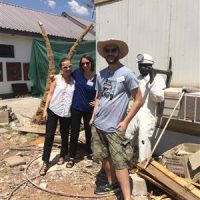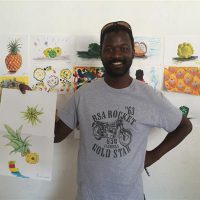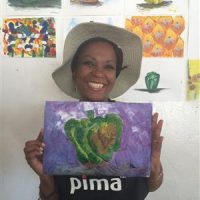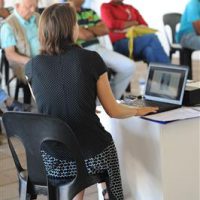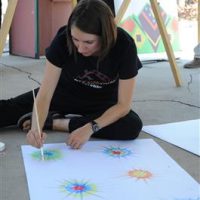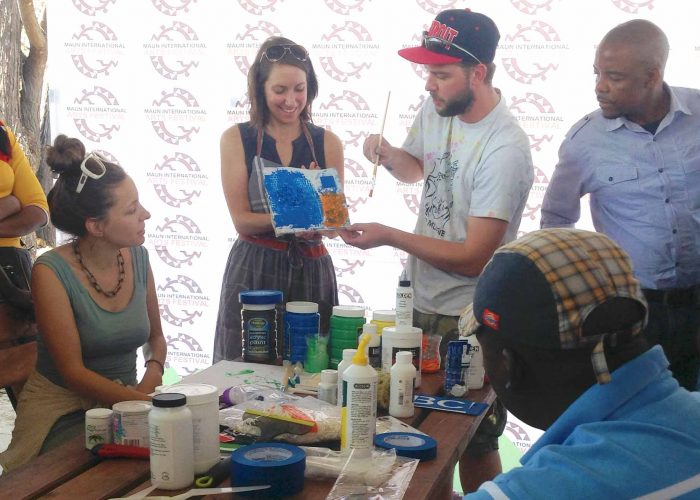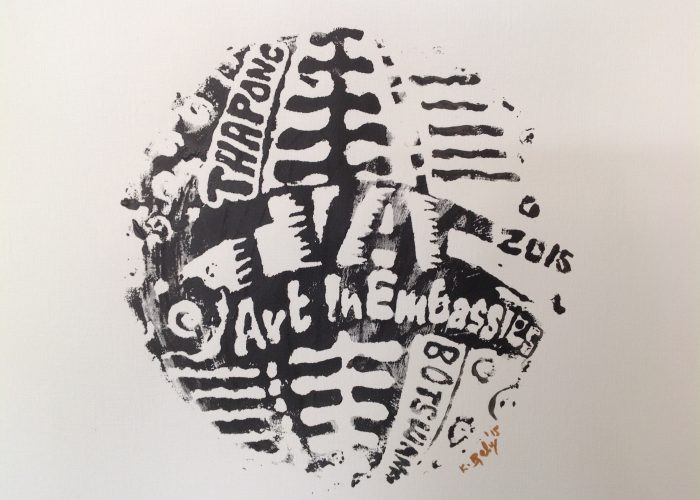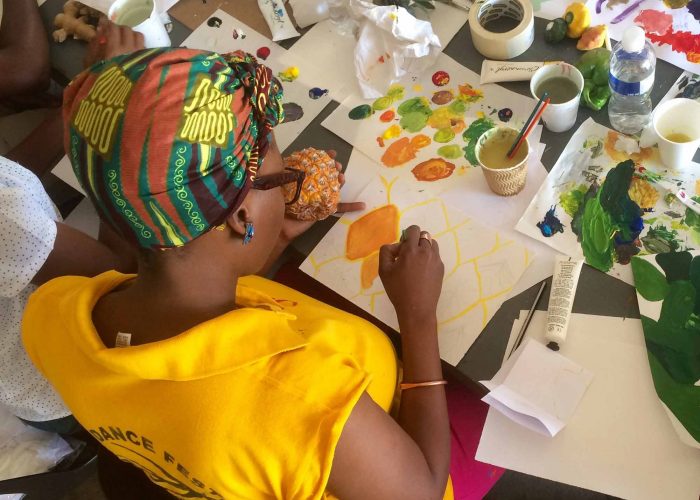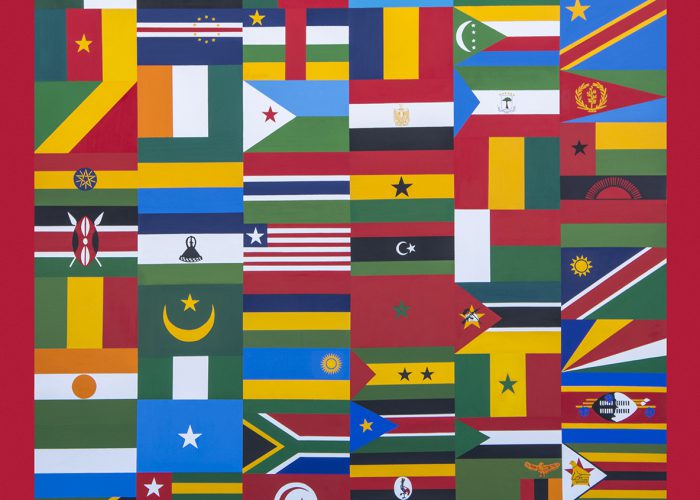“I had never been to Africa before and part of me believed that I might never travel to Africa. Seeing different cities in Botswana and traveling outside of the capital city gave me a rich and varied view of the culture and how people live in different parts of the country. Experiencing and absorbing another culture in person cannot be replicated by any other means. I believe that especially today, when information and images are disseminated so readily, it is more critical than ever to provide opportunities for cultural exchanges. The most meaningful pieces of this exchange are those that are not easily put into words.”
Artist Jacquelyn Gleisner traveled to Botswana for an eight day artist exchange with fellow Cranbook Academy of Art graduates, Jill Galarneau and Peter Clouse. It was an unusual and productive exchange, initiated by Art in Embassies and Ambassador Earl Miller. The artist exchange took place in the capital of Botswana, Gaborone, and in Maun, to coincide with the annual Maun International Art Festival. A long trip brought the artists to Gaborone on Monday morning, where a few hours after arrival, they were ready to present an overview of their work at the Thapong Visual Art Centre, as an introduction of the workshops that were scheduled for the following three days. Reginald Bakwena, the director at the Thapong Visual Arts Centre, introduced the artists and the discussed the overall objective of the three day workshops. Jacquelyn’s series of workshops walked the participants through the process of abstracting commonplace objects such as fruit and vegetables. In the afternoons, she participated in panel discussions on professional development and the use of patterns and decoration in traditional crafts and other forms of visual art. While interacting with the other artists and participants, Jacquelyn realized that “exposure to art can be a powerful way to heighten cultural sensitivity and… to dispel misconceptions about Americans and American artists. Many Batswana artists were under the impression that most working artists in the United States are able to support and sustain a career in the arts through the sales of their art. Teaching and participating in the group discussions allowed us to paint a more accurate depiction of professional artists, especially younger and emerging artists.”
In addition to hosting workshops and presentations, the artists visited the Molepolole College of Education, an institution that prepares artists to become secondary school art teachers.. Jacquelyn observed, “Before this exchange, I had this fantasy of traveling to an exotic place and seeing a culture very removed from mine. In some ways, that picture was accurate, but I found that there were more similarities than dissimilarities. For example, when we visited the Molepolole College of Education, I was shocked at how familiar the studio spaces and classrooms felt to me. I felt very at ease in that environment. As an artist, I feel like I am constantly searching for connections; feeling comfortable in a foreign land reminded me that art can transcend different cultures and spaces.”
As the artists concluded their program in Botswana, which included an unscheduled creation of a mural at the Residence of U.S. Ambassador Earl Miller, Jacquelyn said, “As a professor, I gained valuable experience teaching in a completely new environment. Before I arrived in Gaborone, it was unnerving to prepare material for the workshops because I wanted to know more about the participants, supplies, and facilities. The plans shifted, and I was worried that I didn’t have enough information to teach to the best of my ability. As soon as we arrived at the Thapong Visual Arts Centre on the first day of the workshops, I understood that the structure of the programming would be much looser than I had anticipated. This experience gave me practice adapting to a new environment and expectations. “
